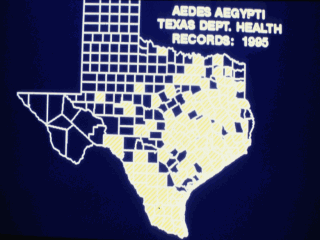|
|
|
|
front |1 |2 |3 |4 |5 |6 |7 |8 |9 |10 |11 |12 |13 |14 |15 |16 |17 |18 |19 |20 |21 |22 |23 |24 |25 |review |
 |
Arthropod-borne disease control requires local and regional efforts that often cover wide areas. The response to disease diffusion from south of the border involves applying counter-measures in directly threatened areas. The type, number, and intensity of such counter-measures are determined by the perceived degree of threat, and can affect a zone extending far from the border itself. Presently, there is no significant obstacle to arthropod-borne disease diffusion in the gradual environmental and climatic transition along the U.S.-Mexico border. Previously distance and widely dispersed population provided barriers, however, the potential for disease diffusion has increased over time. It may be that the key question is: How receptive is the present environment to introduced arthropod-borne viral disease? Bear in mind that human mobility and intervention can alter disease transmission potential. Moreover, diffusion of arthropod-borne disease is the realization of potential ecological pathways for transmission. Disease control seeks to eliminate or at least minimize these pathways, thus preventing diffusion. Dengue is emerging as a major public health problem in most areas along the U.S.-Mexico border. This is attributable to the fact that in recent years the epidemiology of dengue in the Americas has changed dramatically. Over the past two decades epidemics caused by all four dengue virus serotypes have occurred with increasing frequency. The increased disease incidence, combined with increased frequency of epidemic dengue caused by multiple virus serotypes, has increased the risk of epidemic dengue hemorrhagic fever, one of the leading causes of hospitalization and death among children in Southeast-Asia. Examination of the difficulties hindering the eradication of Aedes aegypti has revealed many political, economic, and social problems that, although prevalent for many years, are reaching such proportions in some countries as to negate the effectiveness of the measures taken to prevent, control and eradicate dengue and the vector mosquito, Aedes aegypti. |